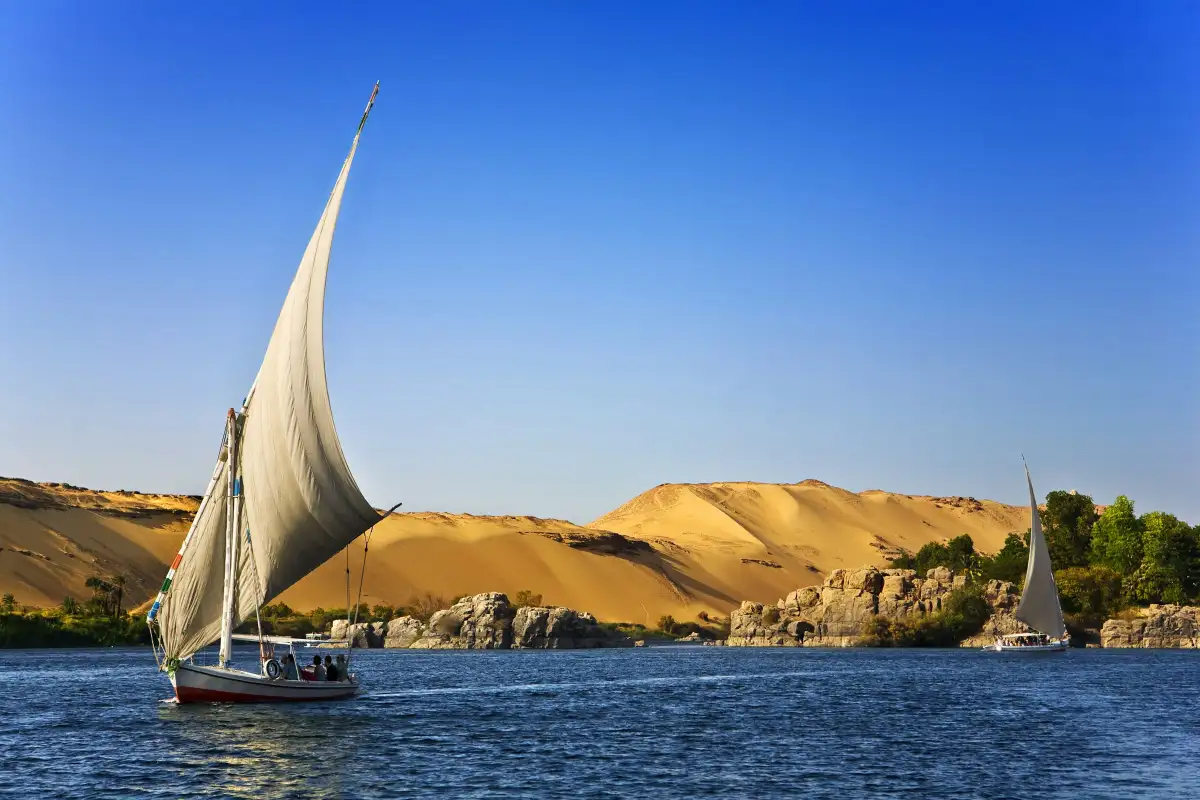Along the Lifeline of Civilization
The Nile River in Egypt
The Nile River, Egypt’s lifeline and a symbol of ancient wonders, weaves through the nation, bearing witness to millennia of history. In this exploration, let numbers guide us along the length and breadth of this iconic river, uncovering the secrets and significance that make the Nile a cornerstone of Egyptian identity.

6,650 kmLiquid Legacy
The Nile, stretching across an impressive 6,650 kilometers, stands as the longest river in the world. Its journey from the heart of Africa, traversing multiple countries, culminates in the fertile Nile Delta, where its waters have nurtured civilizations for thousands of years. This monumental length is not just a geographic statistic but a testament to the Nile’s enduring role in shaping Egypt’s destiny.
5,000 yearsA Lifeline for Civilization
Numbers echo the Nile’s historic importance. For over 5,000 years, the river has been the cradle of Egyptian civilization. From the pharaohs to the modern era, its waters have sustained agriculture, fostered trade, and provided the essential resources that allowed one of the world’s earliest and most enduring civilizations to flourish along its banks.
24,000 km²Fertile Abundance
As the Nile gracefully fans out into the Mediterranean, it forms the lush Nile Delta, covering an expansive 24,000 square kilometers. This fertile region, often referred to as the ‘Gift of the Nile,’ has been the breadbasket of Egypt, supporting a significant portion of the country’s agricultural activities and providing sustenance for its burgeoning population.
111 mThe Aswan High Dam
Numbers also mark Egypt’s modern intervention on the Nile. The Aswan High Dam, an engineering marvel, spans 3,830 meters and rises 111 meters high. Completed in 1970, it regulates the Nile’s flow, controls flooding, and harnesses hydroelectric power. This numeric feat represents both progress and the challenges of managing a river that has shaped the nation’s destiny.
95%Egyptians Along the Nile
Beyond its physical dimensions, the Nile holds demographic significance. Over 95% of Egypt’s population resides along the banks of the river. This concentration underscores the vital role the Nile plays in sustaining livelihoods, highlighting the interconnectedness of the people with the ebb and flow of its waters.

∞Beyond the Numbers
In the arithmetic of rivers, the Nile’s numeric significance tells a story of continuity, innovation, and symbiosis with the people of Egypt. Yet, no number can quantify the river’s cultural richness, the echoes of ancient whispers carried by its waters, or the resilience of a civilization shaped by its eternal flow. As we delve into the numerical depths of the Nile, let the infinity symbol remind us that beyond the statistics lies a profound narrative, connecting the past, present, and future of Egypt.


